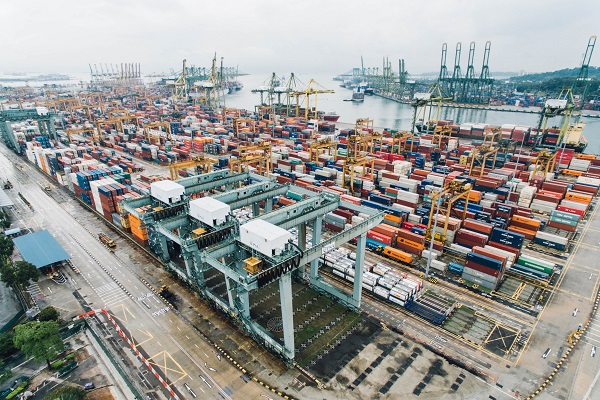Slowing growth in international seafood trade as uncertainty dominates

Global fish production is estimated to have increased by 2.1 percent to a total of 178.8 million tonnes in 2018. The aquaculture sector continues to power global seafood production growth, with expected production increases for most of the major aquacultured species amounting to an overall increase of 4 percent in 2018. Capture fisheries production increased only marginally year-on-year, with good anchoveta catches offset by extremely tight supply of cephalopods and lower catches of mackerel and multiple groundfish species. Another year of moderate but positive economic growth continues to drive increases in fish consumption worldwide, with an average of 20.7 kg of fish estimated to have been consumed per person in 2018.
Last year was marked by rising trade tensions between China and the United States of America and multiple other sources of economic uncertainty, including the “Brexit” negotiations between the EU28 and the United Kingdom, which could have significant implications for the seafood industry. Nevertheless, global seafood trade is estimated to have expanded some 7 percent in USD terms in 2018, helped firstly by a weaker US dollar but also by high fish prices worldwide. In volume terms, however, total export growth in 2018 was almost flat, contrasting noticeably with the World Trade Organization’s (WTO) estimated increase in world merchandise trade of 3.9 percent and also with the rate of overall production growth. This suggests that an increasing proportion of production, particularly from aquaculture in developing countries, is consumed domestically. This trend reflects strengthening demand from growing middle-class, urbanized demographics in producing countries for farmed species that traditionally would have been destined for export markets in developed economies.
The FAO Fish Price Index hit record levels in March 2018, driven by widening supply-demand gaps for a number of key species, including cephalopods, bivalves, pangasius, salmon and various wild groundfish species. Catches of octopus and squid have been poor globally, while lower production of Pacific and Atlantic cod is the major factor behind a decline in wild whitefish supply. Inevitably, higher prices result when strengthening demand pulls against stable or decreasing supply. Prices for aquacultured species have been more stable but increases are nevertheless being observed wherever regulatory, technological and physical constraints slow the rate of production expansion to the point where it is outpaced by broad-based demand growth.
The United States of America is the only major market expected to see a decline in total imports in value terms in 2018, a consequence of a weaker dollar and the “trade war” with China which saw the introduction of a new tariff regime and impacted trade particularly in the second half of the year. In the EU28, import growth actually accelerated in 2018, partly due to currency shifts but also as a result of solid underlying demand in the major EU28 economies. Japan saw seafood imports growth slow as economic indicators weakened, leaving China (including Hong Kong SAR and Taiwan Province of China) as the clear leader of Asian market growth in 2018. China also saw export revenues rise again in 2018, helped by strong regional demand, while Norway continues to enjoy good sales in its core EU28 markets. In general, most cephalopod, whitefish and salmon producers have achieved good results in 2018 due to high price levels, while Viet Nam and Indonesia also benefitted from rising shrimp harvests.
In the EU28, with Brexit theoretically imminent, there is seemingly still quite a wide range of possible outcomes. One of these is a ‘no-deal’ scenario that could inflict significant damage on many UK export industries, including the Scottish salmon aquaculture sector, while UK seafood suppliers such as Norway could be subject to tariffs of up to 20 percent as well as additional paperwork at the border. The no-deal outcome would also entail changes to rules governing UK fisheries access rights, as the United Kingdom would no longer be subject to the dictates of the EU28’s Common Fisheries Policy and could potentially restrict the rights of EU28 nation fleets to fish in UK waters.
Elsewhere, the delay of a proposed tariff hike on Chinese imports into the United States of America until March 2019 should give a temporary boost to this important seafood trade route in the first quarter of 2019 although at the same time some importers that have overbought may now be in a vulnerable position. The combination of these uncertainties with widespread interest rate hikes and slowing international trade growth will likely put a dampener on demand in 2019. There appears to be limited scope for supply increases for many important species and this can be expected to keep seafood price relatively high. This tight supplydemand balance is increasingly a major driving force behind various technological developments in aquaculture, ranging from more effective disease management systems and feed solutions to entirely new farming methods.

